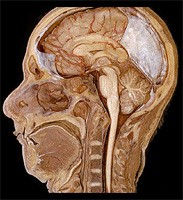
About 450,000 Americans have cardiac arrest annually.1 About 80% of cardiac arrests occur at home, for which the rate of death is at least 90%. More than half the survivors have permanent brain damage of varying degrees. The use of an implantable cardioverter–defibrillator in appropriate patients and the availability of public-access defibrillators have improved survival with an acceptable quality of life.
In-hospital arrests have slightly better outcomes than those that occur outside the hospital, with restoration of circulation in 44% of patients and survival to discharge in 17% of patients. Two randomized, controlled trials showed a positive effect of hypothermia on mortality and morbidity after cardiac arrest.
When patients are comatose after resuscitation (a state commonly referred to as anoxic–ischemic encephalopathy), there is a spectrum of outcomes, ranging from brain death to good recovery. Some progress has been made in the prediction of outcomes for initially comatose patients, mainly in the prediction of poor outcomes.
[...]
Artículo: Bajar el artículo completo de la red. [Clic aquí]

